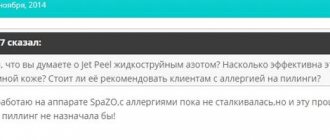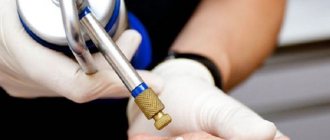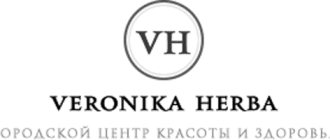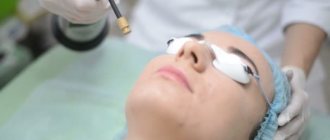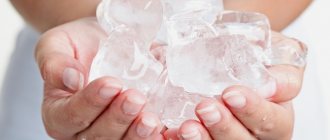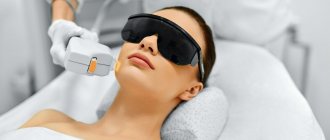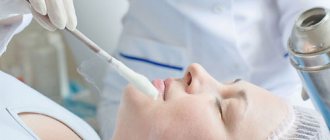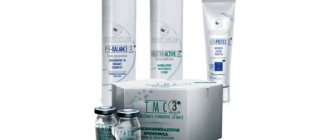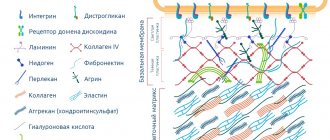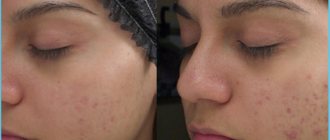Cryosurgery or cryotherapy is a relatively effective and non-invasive procedure for treating many skin problems, especially skin cancers, warts and inflammatory diseases.
This is a widely used therapy, usually performed using liquid nitrogen, carbon dioxide and nitrous oxide. Rapid freezing causes destruction of intracellular organelles with subsequent direct cellular damage, inflammation and altered vascular damage.
The advantages of cryosurgery are non-invasiveness and relatively short treatment time. Side effects include pain, blistering, hyperpigmentation, and sometimes scarring or decreased sensation.
What is cryotherapy? Can the method be considered new?
The content of the article
Cryosurgery (from the Greek Kry´os - cold, ice) is a treatment method that involves local controlled destruction of tissue by freezing it.
The earliest mention of treatment with this method dates back to ancient Egypt, dating back to 2500 BC. The Egyptians used cold compresses to reduce inflammation. The most famous healers of the past wrote about this method.
For example, Hippocrates (460–370 BC) noted that cooling reduces pain, swelling and bleeding caused by injury. Celsus described cold necrosis of the skin in 25 AD. And Galen's reports of loss of sensitivity after cooling date back to 177.
The beginning of modern cryotherapy is considered to be the work of Arnott (1855) on the effect of low temperature on neoplastic changes. The breakthrough that made it possible to use low temperatures in medicine was the condensation of air and other gases at the end of the 19th century. The first dermatologist to use low temperature to treat cutaneous tuberculosis in 1885 was Gerhardt.
The term “cryotherapy” was introduced in 1902 by the German dermatologist Juliusberg. He was also the first to use "cryospray" in the form of a spray of compressed carbon dioxide.
Cryospray
The development of modern cryosurgery was accelerated in 1961, when American surgeons Cooper and Lee used liquid nitrogen in thalamotomy. The last three decades have brought rapid developments in cryosurgery and made it one of the most common forms of surgical treatment for skin diseases.
Symptoms and types of warts on the foot
A plantar wart appears as a callus-like thickening with a stratum corneum layer of skin. It interferes with walking and causes pain. The passive state is characterized by slow reproduction, not reaching the stratum corneum of the epithelium, so this condition does not manifest itself externally.
The active state is characterized by the fact that the virus develops rapidly and, rising to the upper layers of the epidermis, manifests itself in numerous symptoms. The plantar wart is also called the spinous wart, chicken wart. The virus enters during its contact with the skin through cuts and abrasions in the outer layer of the skin:
- First, a small yellowish-gray papule with an uneven surface appears.
- Gradually, the small element becomes dense and acquires a dirty color.
From the inside, a plantar wart looks like fused papillae of different sizes with a pinkish tint. Additional capillary vessels form there, causing bleeding if you catch a wart.
Drugs used in cryotherapy
Cryosurgical devices use liquefied gases called cryogenic liquids as coolants. They are safe to use, non-flammable and chemically inactive. Most often used:
- liquid nitrogen with a boiling point - 195.8 o C;
- nitrous oxide with a boiling point - 88.7 o C;
- carbon dioxide with a boiling point - 78.9 o C (3, 7).
Carbon dioxide
“snow paste” is also used in cryotherapy. This is a mixture of dry ice, that is, solid carbon dioxide, with alcohol, ether or acetone (ratio 1:15).
Modern cryosurgery devices use three main methods of reducing temperature, for example through physical phenomena:
- change of state from liquid to gas;
- adiabatic expansion or Joule-Thomson effect;
- thermoelectric effect.
The choice of freezing method depends on the type of lesion and the experience and preference of the dermatologist.
The essence of the procedure
Another name for the procedure is cryotherapy, i.e. cold treatment. It is a kind of massage with an analgesic and anti-inflammatory effect.
Indications:
- loss of elasticity;
- dull, unhealthy complexion;
- initial age-related changes;
- blackheads, acne, post-acne, sebaceous plugs, scars;
- dermatological diseases (demodex, rosacea, seborrheic keratosis);
- pigmentation;
- swelling;
- increased skin oiliness;
- discomfort after manual or mechanical cleaning;
- treatment of varicose veins, spider veins and warts.
Efficiency
Nitrogen is a gas that becomes liquid at -195.6 degrees.
This substance cools the skin, as a result, the capillaries narrow. The phenomenon of vasoconstriction determines the effectiveness of the treatment. When a liquid freezes, dead particles are easily scraped off the surface.
Oxygen with vitamins and antioxidants kills bacteria and restores cells. The blood vessels dilate, which helps eliminate toxins and impurities. Microcirculation also increases, the skin is saturated with oxygen and the production of elastin and collagen increases.
Nitrogen facial cleansing can solve many aesthetic problems and some dermatological diseases:
- metabolism and blood circulation accelerates;
- swelling decreases;
- pores narrow;
- small age and expression wrinkles disappear;
- pigment spots become less noticeable or disappear completely;
- skin firmness and elasticity appears;
- healthy complexion is restored;
- the inflammatory process stops.
The result lasts for a month.
Buyanov Sergey Yurievich (Expert Doctor):
Cryotherapy is most effective for acne and seborrhea. A persistent spasm of the fatty glands completely stops the synthesis of fatty acids, which serve as food for late blight, which provokes blockage of the glands and increases peeling of the epidermis.
Methods used in cryotherapy
There are three treatment methods.
- Deep steak.
- Spot freezing.
- Contact method.
"Deep steak"
- freezing using swabs immersed in liquid nitrogen. This method can only be used to treat benign and shallow lesions.
This treatment option poses the highest risk of transmission of all options. Thus, HSV, HPV, HBV and HIV viruses can be transmitted if oozing and bleeding lesions are treated.
The preventative measure for this method is to use a new swab every time it is dipped in nitrogen. It is also recommended to fill small containers, separate for each patient, and not to pour unused nitrogen back into the main reservoir.
Deep steak - freezing using tampons
«Spot freezing»
- A spray method using liquid nitrogen or nitrous oxide as a refrigerant. It is used to treat lesions with a diameter of up to 2 cm. It is recommended to spray from a distance of 1 cm, without moving the gas outlet above the center of the lesion.
This procedure allows for a better assessment of the freezing zone compared to a method in which the device's nozzle is moved over the bloom in a grid or expanding circles. Therefore, larger lesions should be treated with this method in stages, dividing them into segments with a diameter of about 2 cm.
Modifications of the spray method to limit the area of frozen tissue are the "open spray method" using cylindrical screens of varying diameters and the "closed spray method" in which the screen forms a closed chamber.
Spot freezing
"Contact method"
, called the application method, using closed cryoapplicators, using mainly nitrous oxide as a coolant, less often liquid nitrogen and carbon dioxide.
Depending on the set of attachments, this method allows you to treat lesions ranging from pinpoint to several centimeters in diameter. Rashes over large areas can be treated with applicators using the field overlap method.
The contact method is recommended for the treatment of lesions located in hard-to-reach areas. This allows you to strictly limit the area of freezing to the planned location, thereby reducing the risk of damage to surrounding tissue.
Processing time is longer than with the spray method. Achieving deeper necrosis using this method is facilitated by: applying a neutral gel to the skin at the treatment site, cooling the tip only after applying it to the skin,
Types and reasons
Warts are:
There are a lot of varieties of warts; they are classified according to a number of characteristics:
- Simple. They occur on exposed parts of the body, arms, legs, face, and scalp. They are usually not dangerous, but they are not aesthetically pleasing and can multiply quickly, affecting large areas of the skin. They are arranged as if in “families”.
- Plantar. Their localization is exclusively on the feet. Causes discomfort when walking.
The main cause is infection with the human papillomavirus, which affects the mucous membranes and skin.
Pathomechanism of low temperatures. How does cryotherapy work?
All morphological, biochemical and physiological phenomena accompanying freezing are directly or indirectly a consequence of the formation of ice crystals.
The extent of tissue damage depends on the rate at which the temperature drops, the duration of exposure of the cells to subfreezing temperatures, the lowest temperature reached in the tissue, and the rate of thawing.
Slow cooling of tissues (from -5 to -15 o C) causes the formation of large ice crystals in the extracellular environment. An increase in the concentration of electrolytes in the remaining volume of fluid causes a change in concentration gradients between the extracellular and intracellular environment. This promotes dehydration and cell contraction. These changes can disrupt the phospholipids of cell membranes and disrupt their continuity. The hypertonic environment inside the cell promotes the release of its components beyond the cell membrane. Dehydration of cells also destroys lysosomes.
However, extracellular ice is not the main cause of damage. Rapid freezing causes the simultaneous formation of extracellular and intracellular ice. The number of ice crystals increases as the rate of freezing increases, and their size decreases.
- The presence of ice crystals inside the cell causes damage to mitochondria and the endoplasmic reticulum. Therefore, the primary disorders concern the plasma membranes.
- Secondly, there are changes in proteins and enzymes. DNA synthesis is suppressed.
The higher the freezing rate, the greater the degree of intracellular ice formation and the greater the damage to cells.
The thawing process has a major impact on cell survival. Rapid thawing gives cells a better chance of survival compared to slow thawing. This is due to the process of recrystallization, that is, the combination of small ice crystals into larger ones. Recrystallization is especially enhanced during slow thawing of tissues. The degree of damage increases with increasing crystal volume.
Schematic representation of the hypothesis of two-factor cell damage during freezing and thawing
Therefore, in the case of cryotherapy treatment, the optimal procedure is to quickly freeze the tissue, use a sufficiently long cryo-application time, slow natural thawing (at a rate of no more than 10 °C/min), and possibly repeat the freeze-thaw cycle, which increases the likelihood of cell death.
The direct effect of cryomedrosis is aggravated by the development of vascular changes during and after the procedure. During freezing, blood vessels constrict, which leads to inhibition of blood flow and stagnation of blood in the area exposed to low temperatures.
- Most capillaries are affected immediately.
- In medium-sized vessels (with a cross-section of more than 0.33 mm), circulation stops after a few days.
- In larger vessels, cryosurgery does not cause contraction and they retain their function.
About 30 minutes after freezing, circulation returns, accompanied by a rapid rise in temperature. Dilatation of capillaries and small veins is observed in the presence of blood thickeners and microembolisms. This contributes to inhibition of blood circulation, hypoxia and cell death.
Changes in the ultrastructure of the vessel walls are also observed, causing an increase in their permeability and massive exudate. Bleeding may occur due to the opening of arteriovenous connections in the damaged area. 2-3 hours after freezing, the blood supply decreases again, and this phenomenon intensifies over the next 12 hours.
In the tissue immediately surrounding the freezing zone, an increase in vascular blood flow is observed as the temperature decreases and with greater intensity after thawing, which is manifested by erythema of the surrounding skin.
The described changes in cells and tissues are manifested by a macroscopic image characteristic of cryotherapy:
- During treatment, freezing and changes in the consistency of the area are observed;
- After tissue frostbite, redness appears associated with hyperemia in this area, and then rapidly increasing swelling;
- After a few hours, exudation or a blister appears. The rate at which blisters form depends on the location of the frozen lesion - in the case of a facial lesion, a blister appears within a few minutes, in the case of foot surgery only after a few days.
- The blister lasts about 7-10 days, then a scab forms for 2-3 weeks;
- After the scab falls off, a fresh light pink scar is visible, which after a few months becomes paler and less noticeable.
No anesthesia is used during the procedure. The procedure itself is generally painless; when freezing, the patient may feel a “burning sensation.” Immediately after the procedure, pain may appear during the thawing phase, which quickly passes.
Contraindications
It is necessary to ensure that there are no contraindications before cauterizing the erosion, for which the woman is prescribed a whole range of studies. The main restrictions are:
- blood clotting disorders;
- malignant degeneration of tissues of the eroded area;
- sexually transmitted diseases (in acute or chronic stages);
- inflammatory processes in the genitourinary system;
- manifestation of signs of bleeding;
- pregnancy, less often - breastfeeding;
- early period after childbirth, the presence of lochia;
- installed IUD;
- history of caesarean section;
- diabetes;
- HPV carriage;
- exacerbation of any chronic disease.
Not all methods of cauterization of cervical erosion are universal; if the damage to the epithelial area is significant, only a few methods are suitable.
If the principles of contraindications are not followed, various complications may occur after the procedure. That is why at the stage of early examination it is necessary to take blood tests (biochemical and general), urine, smears, cytology and others to determine the woman’s hormonal status and the absence of bacterial and viral inflammation.
Sensitivity to cryotherapy of various skin components
- Connective tissue
. Characterized by low sensitivity of connective tissue fibers to low temperatures. As a result, after cryotherapy, the collagen mesh forms a framework around which cell renewal occurs. This contributes to achieving very good cosmetic results after the procedure. - Tumors
. The same property of collagen fibers makes it possible to deep freeze tumors over cartilage and bone tissue and leads to a more rapid restoration of normal sensations in the scar due to the restoration of the axon consisting of collagen fibers. - Hair follicles
. Despite the fact that they are located deep in the skin, they are highly sensitive to low temperatures. This may limit the use of cryotherapy, but it can also be used in this treatment. - Melanocytes
. The effect of low temperature on melanocytes depends on the duration of the procedure. After short freezing 5-15 sec. electron microscopy shows normal melanocytes and keratinocytes containing mature melanosomes. Freezing lasts up to 30 seconds. and is repeated twice, this leads to a noticeable decrease in the number of melanocytes and the complete disappearance of melanosomes in keratinocytes. Discoloration occurs due to the presence of melanin in the epidermis. Regardless of the duration, freezing leaves discoloration that lasts for at least 6 months. Such long-term persistence of discoloration and slow disappearance after the procedure may be associated with damage to the nerve endings of the skin (hypothesis about the influence of neurogenic factors on melanin synthesis or melanocyte migration).
Advantages of liquid nitrogen removal:
- The main advantage of cryodestruction is minimal trauma to the skin. Under the influence of liquid nitrogen, the wart or papilloma becomes covered with a crust, under which the cell healing process occurs. After the crust falls off, not a trace of the tumor remains on the skin. Cryodestruction is not accompanied by bleeding or pain; there is no need for preliminary preparation before removing a plantar wart or other tumors.
- The procedure is carried out quickly.
- Short recovery period.
- No further care is required for the treated skin area.
- Reasonable prices for the procedure.
Cryodestruction helps get rid of tumors such as:
- Warts
- Papillomas
- Condylomas
- Moles
- Keratomas.
This technique for removing tumors is used in cosmetology, as well as in gynecology, surgery and oncology. Cryodestruction is also used to cauterize cervical erosion and remove tonsils.
The multidisciplinary clinic "VIVO CLINIC" in Veliky Novgorod provides a wide range of medical services provided by highly qualified specialists with extensive experience.
Cryostimulation
When discussing the effect of low temperature on cells and tissues, one cannot ignore the phenomenon of cryostimulation, that is, stimulation of the immune system caused by cold. This phenomenon has been observed during cryotherapy treatment of neoplastic tumors.
For example, regression of nonfrozen metastases has been observed during palliative treatment of melanoma with multiple cutaneous metastases. This has been associated with the emergence of cytotoxic lymphocytes and other immune cells that target tumor cells. This phenomenon is currently explained by two mechanisms:
- The release of numerous cytokines and other immunogens destroyed by freezing tumor cells may promote the development of mature effector cells and increase the expression of ICAM adhesion particles as well as MHC particles on neoplastic cells (which have been demonstrated to be absent or reduced in many cases).
- Increased expression of MHC class II antigens and activation of CD4+ helper cells and antigen presenting cells. This could lead to the stimulation and maturation of cytotoxic lymphocytes that destroy distant tumor metastases.
ONLINE REGISTRATION at the DIANA clinic
You can sign up by calling the toll-free phone number 8-800-707-15-60 or filling out the contact form. In this case, we will contact you ourselves.
Human papillomavirus
This is one of the most common viruses on Earth. Infection can occur in several ways:
- contact and household (through touch);
- sexual (genital, anal, oral-genital);
- in childbirth from mother to child.
The period of development of the disease ranges from several weeks to tens of years, this is explained by the fact that the virus may not manifest itself for a long time, but as soon as the immunity becomes a little weaker, growths immediately appear on the skin and/or mucous membranes. The main danger of this disease is that certain types of HPV are highly likely to cause the formation of a malignant tumor (cancer of the skin or mucous membranes). To make sure that the disease will not lead to the formation of a tumor, it is necessary to undergo examination by a doctor and not self-medicate.
Cryomassage during pregnancy
Pregnant women are allowed to do cryomassage only on the face.
At the same time, given the instability of the hormonal background of women during pregnancy, it is important to ensure that the influence of cold does not affect the tone of the uterus.
If you have a strong desire or need to perform facial cryomassage during pregnancy, be sure to consult your doctor .
We also recommend doing 2 procedures followed by a break to look at the body’s reaction in order to avoid adverse reactions.
